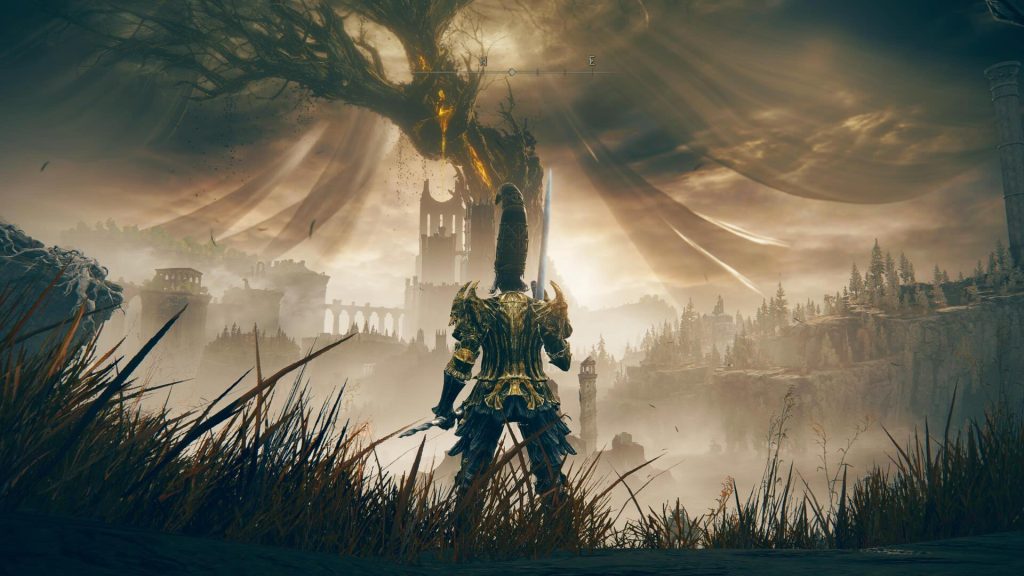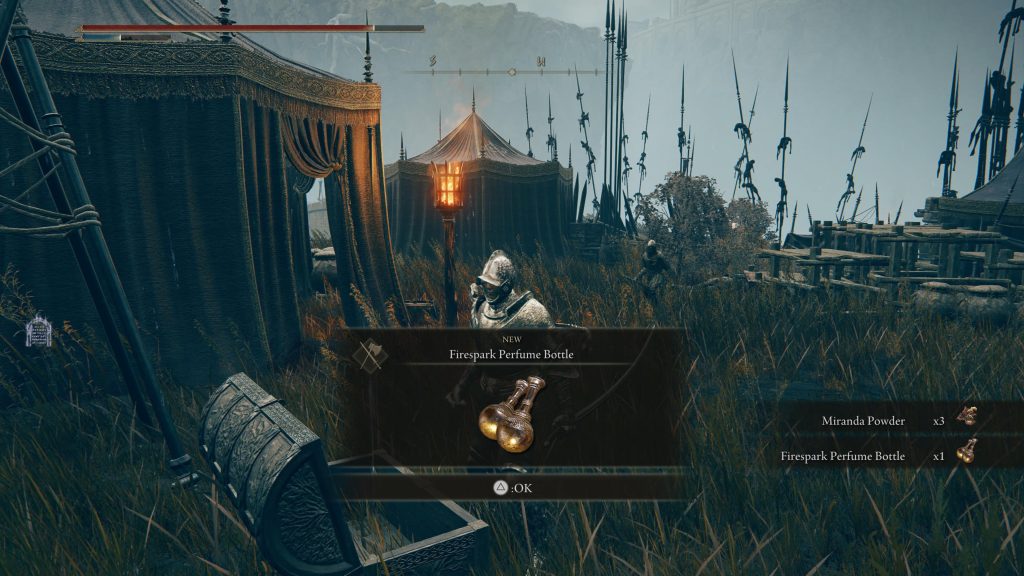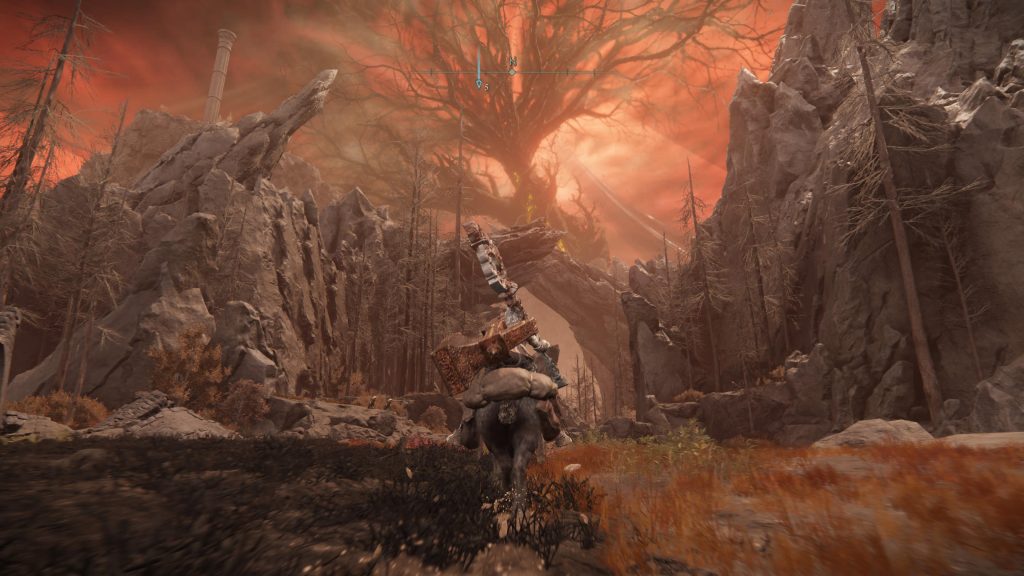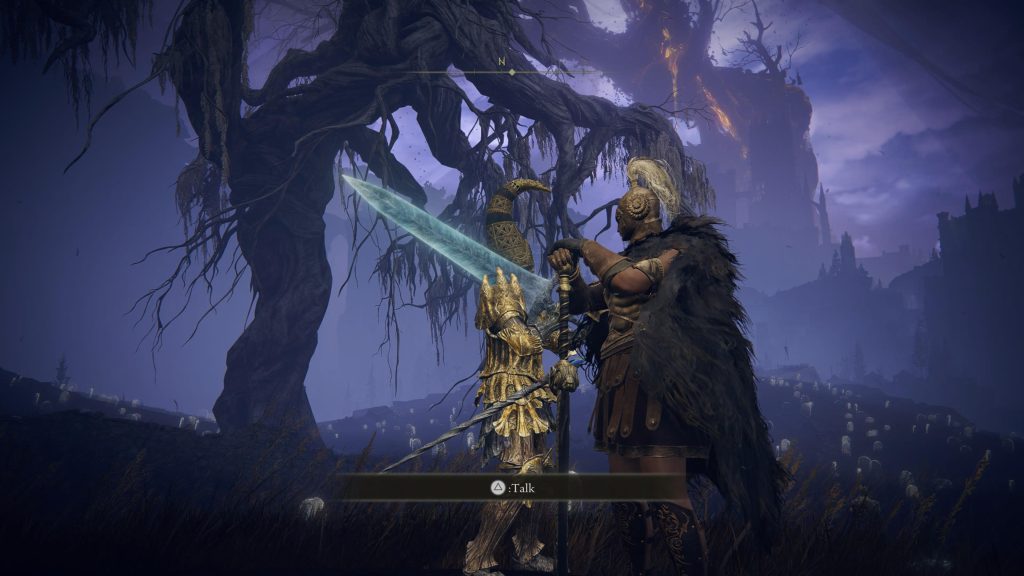I hit my first roadblock very early on in Shadow of the Erdtree. The first two bosses I came across both took me a day to beat. It was an exhausting process, dying repeatedly no matter what weapon I tried. Then it just happened. I would win. Then I would beat the next boss. Then I would enter the next area. And boy was there a lot to explore in just “the next area.” It’s been a while since Elden Ring: Shadow of the Erdtree came out, and I’m still settling on how to feel about it. On one hand, it’s got some of the challenging, occassionally unfair things in any FromSoftware release, with just a few too many unanswered questions even for the famously vague studio. On the other hand, I doubt I’ll ever play an expansion quite like this in terms of sheer scope and consistency in quality. Shadow of the Erdtree might not be technically perfect, but it is far more than the sum of its admittedly messy, but ultimately satisfying parts. Spoilers ahead for the base game.
Note: This review was primarily written before the patch changes to the final boss.
Table of Contents
A New Challenge

A lot of people don’t like the difficulty of FromSoftware’s titles. I’m the opposite. I’ve finished everything from Demon’s Souls to this new DLC, and I can confidently say that this is the studio toeing that balancing act of difficulty more than ever. There are a few moments where they actually do cross over, with a few bosses having dodge windows for certain attacks a tad too tight (a certain 3 hit combo ending in a cross slash along with a very simple charging attack come to mind).
The final boss is by far the hardest thing they’ve ever made, surpassing Malenia by a clear mile. I’ve beaten the final boss of the DLC twice and Malenia three times, and while Malenia does feel perfectly fair even given her ability to steal life, Shadow of the Erdtree’s final boss was just straight up unfun at times. I don’t know any other boss in a Soulsborne or a Soulslike that I’ve fought that has taken me more than a good night’s sleep before defeating, but the DLC’s final boss took me a solid three days to beat on launch.
Maybe it was only having level 15 of the Scadutree Fragments, given that my second attempt with 18 took significantly less, but even then, I found it to be just a step too far. On my first playthrough, I only ended up beating it utilizing a Buckler parry and a bleed-infused light greatsword, completely abandoning my intelligence build. Two years later and bleed builds are still saving lives, who could’ve guessed.
Thankfully, throughout the rest of the DLC, Elden Ring seems to have perfected its flow. While there is a general path you might be inclined to follow, the entire DLC is a lot more open in its progression than one would assume. I went and fought through a place called Castle Ensis, and while it was fun on my first playthrough, I was shocked when I discovered a way to bypass it entirely on my next one, and moved onto the next area. I used that to make everything easier, getting the Scadutree Fragments that I knew about to get stronger and make Castle Ensis easier.
Other bosses present are a lot more tolerable in terms of difficulty. Yet again, much like in their first ever DLC, the studio delivers on an absolutely fantastic dragon boss that ranks among their best ever, for the sheer spectacle alone. Summoning is advised for this fellow. My own personal favorite boss has to be one of the optional ones whose weapon Bloodborne fans will be delighted to see.
In fact, the optional bosses, much like that of the base game, feel like they earn the buildup they receive. One hidden boss feels like a classic Souls boss in the best way with its powerful yet telegraphed moveset, while the heavily marketed Messmer delivers on being a threatening and intimidating force that has some of the most satisfying attacks to dodge.
Brand new enemies that populate the Land of Shadow are some of the most strikingly designed and memorable opponents one could ever encounter in a FromSoftware title. There are some familiar enemies used surprisingly effectively, but for the most part, you’ll find new grunts with dangerous movesets. Sometimes they feel a bit too fast, and they stretch the limits of the traditional Soulsborne movement’s capabilities, but none of them feel truly impossible to overcome.
It feels like FromSoftware has learned over the years and through narrowing down its areas, was able to make a more focused, balanced experience overall. Sure, I still hit a lot of roadblocks in the form of some truly tricky enemies, but nothing really felt impossible.
A Whole New Realm

The Land of Shadow is easily home to some of Elden Ring’s strongest areas. There are some late game areas that hold so much content behind different routes that I am confident I haven’t even come close to exploring everything in the DLC. While I beat all the main bosses, there’s still some stray ones I’ve yet to beat or encounter, with quite a number of dungeons left to be ransacked.
These dungeons take what was easily the weakest part of the base game, and make it so much better. Dungeons and side areas are no longer extremely repetitive, but have so much depth and even unique bosses, countering the repetitive nature of the base game’s many caves. The new forges for example take advantage of the new environments and even provide new, interesting enemies to fight.
The amount of new content in this DLC is astounding, far surpassing what any of the other FromSoftware expansions offer. I’m confident you could fit the entirety of both the Ringed City and Artorias of the Abyss into the Land of Shadow and still find space for more of the DLCs content. I found myself enjoying being lost and stumbling into places, some with enemies, and some with rewards. I took a risky jump into an abandoned church and found a Talisman that helps me out with my FP supply, perfect for my Intelligence build.
These new areas rank highly among the best in FromSoftware’s history, with one tucked away castle found after going through a secret, terrifying area holding some of the most awe-inspiring environments and revelations regarding its inhabitants, culminating in one of the DLC’s best boss battles. While the map doesn’t seem quite as big initially, the verticality of it and the different paths in each large area are sure to surprise any player initially skeptical of the DLC’s price point.
The areas may be amazing, but what truly makes Shadow of the Erdtree special are its new weapons. While the final boss made me drop my build, it wasn’t something I wasn’t too disinterested in doing given how fun the new weapon types all are. Sure, you’ve still got your new swords and hammers, some of which I carried to the endgame in my second playthrough, but a whole host of new weapon types allow for so much variety that I can’t imagine the base game without them now.
Unfortunately, some of them feel a tad bit underpowered. I’m yet to find what really makes the Smithscript Daggers more useful than a typical ranged spell, which is really disappointing considering how rare it is to find throwing weapons that aren’t consumables. That said, they are still a lot of fun to use and are advisable for anyone wanting to inflict status in a fun way, though there are better options to do even that. Thankfully, they are what seem to be the weakest of the bunch, with the rest all being amazing from what I’ve played so far. There’s something here for every build, with tons of new spells, weapons, and even more weapons for specific elements and status effects that weren’t so commonly seen in the base game.

I found myself drawn a lot to the Perfume Bottles, with my Intelligence build finding a home in the Chilling Perfume Bottles that work really well to inflict Frostbite. Pretty much all of the elemental effects get their own Perfume weapon, even Frenzy, which works to inflict fire damage as well. They all get upgraded through regular Smithing Stones (which the DLC thankfully provides many of), with the Deadly Poison Perfume Bottle being the only one to rely on Somber Smithing Stones.
Light Greatswords and Hand-to-Hand Arts are also incredibly fun and shockingly powerful. They both offer really unique movesets with amazing animations that come with them. I’ve used Hand-to-Hand Arts against big bosses in the base game like Hoarax Loux and it felt incredibly satisfying. These weapons also come with new Ashes of War that boost their utility, and the ability to apply a big stomping Ash of War to my Fists was very exciting. Even the new Thrusting Shield weapons were great and a lot of fun to mess around with.
All of these new weapons work fantastically with one of the DLC’s biggest and most surprisingly effective additions: the Deflecting Hardtear. Anyone who’s a Sekiro fan will find themselves comfortable, as perfect blocking with it negates damage received and helps if you want to use Guard Counters without needing a shield. This significantly changed the way I approached my game as soon as I realized just how useful it was.
To illustrate just how powerful this was, using it with my Great Stars +25 on my strength build combined with the Cragblade Ash of War to boost my damage and stance breaking, or in other words, a giant stick that deals big damage, I was able to block most, if not all the damage I’d receive from Malenia’s hits, and while it came with the downside of regenerating some of her health, I was landing consistent ripostes and Guard Counters, leading to my fastest victory against her. I used it further on into the game against the aforementioned Hoarax Loux, fighting against him with my Madding Hand (one of the new Fist weapons that deals Physical and Fire damage in addition to building up Madness) in a very difficult, but incredibly satisfying duel.
Grace and Gods

FromSoftware has never been clear with its lore except in very few instances. Demon’s Souls is one of the clearest, but Shadow of the Erdtree has what might be the studio’s most straightforward story other than Armored Core VI: Fires of Rubicon, and it takes the lessons learned from it and puts it to good work.
One of the best things about Armored Core VI was its cast, with characters like Walter, Ayre and Rusty becoming instantly memorable. What helped them out was we’d often interact with them directly in the story, something really uncommon for FromSoftware to do. They took the interactions from there and seem to have worked them into Shadow of the Erdtree, and as a result, the writing is far more focused and thus, more engaging than ever now.
Unlike many Soulsborne titles, this DLC has a central cast that it focuses on, and your interactions with them do result in some things changing towards the end of the experience. Their writing is simple, but it is very effective. Some of them have some storylines that are extremely exciting to see play out, and even those outside of the central group were amazing characters (see: a certain Drake Warrior).
The general story of Shadow of the Erdtree being one of their simplest doesn’t make it any less engaging, in fact doing the absolute opposite. The central, mysterious figure of Miquella gets a lot of focus, as does Messmer, and they are some of the studio’s most intriguing characters. While Miquella’s story doesn’t quite resolve in the most satisfying ways, unfortunately leading to a rushed, underwhelming ending, Messmer and the lore he provides changes a lot of things about Elden Ring’s base game. Miquella’s story, thanks to the roughly two years of buildup, concluding with a desire for more that doesn’t end up working. Too many plot threads lingering are left untouched, like Torrent’s origin for example, and while it was stated ahead of time that there wouldn’t be any new ending, it feels like a massive wasted opportunity.
Incredibly disappointing as well is the lack of interaction that the DLC has with the base game, as unlike Dark Souls 1 even, there are no hidden cutscenes (that have been found at least) tying it to the base game. Don’t expect any special Sif interactions this time around, not even with Malenia, as I unfortunately found out despite putting her off on my second playthrough until the end. It is nice to have it feel like a standalone experience, but absolutely no connections to the base game given the massive lore implications feels a little cheap. Still, despite Miquella’s story not ending neatly, it undoubtedly had some really good moments that revealed really dark truths about the entire game’s world.
Verdict

It’s by no means a perfect expansion, with some lore and boss designs not working as well as the developers hoped, but in spite of that, this is still one of the biggest and most rewarding expansions to ever come out of any game. People are right to call this “Elden Ring 1.5,” as it expands not only the story, but the gameplay in massive ways. Much like many of the studio’s DLCs before, I don’t think I can play Elden Ring again without making a run through the Land of Shadow, as it provides some of the most difficult boss battles, glorious spectacle, and a lot of satisfying new content. What few missteps it makes fall nearly completely to the wayside once it becomes clear just how truly enormous this new offering is, making for what is easily one of the greatest DLC expansions of all time.







